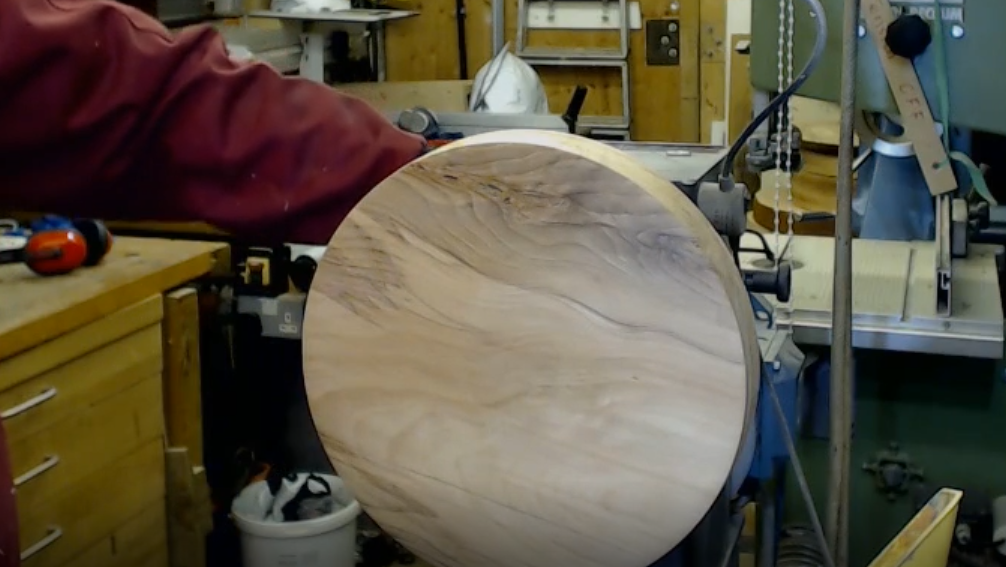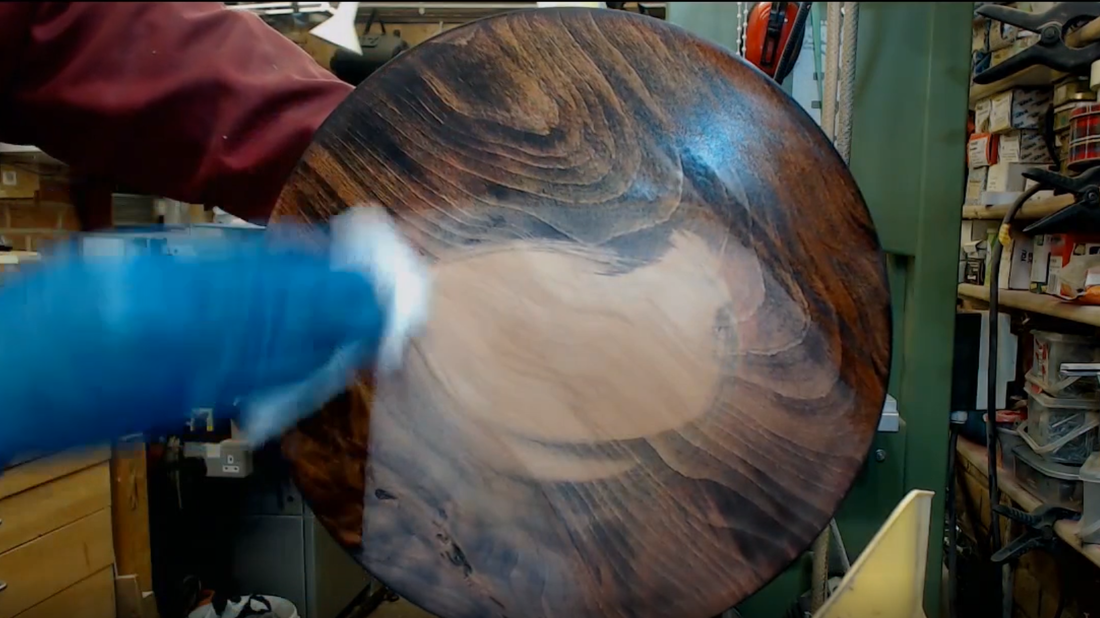|
It's been good to get back in the shed this week after my summer break in Italy and Austria. My latest video is up on YouTube and I've been filming again today for a follow-up video which I hope will be finished in a few days' time. Sometimes, I intend to colour a piece of wood only to find that the grain is lovely and that colouring with an opaque finish would really not be the kind thing to do to the piece of wood. I do have some sensibility left for appreciating wood in its natural beauty. This is what my latest video covers - adding colour to wood but allowing the grain to show through. Of course, a wash of colour or stain could be applied, but that would only change the colour of the rim. This approach, I believe, enhances the grain and figure of the wood by increasing the contrast. The process is simple - prepare your piece of wood by sanding the surface to 320 grit. Then cover with black stain. In the video I use Chestnut Spirit Stains. I'm working on the follow-up video by using Hampshire Sheen's Intrinsic Colours. Sand back the black stain to leave about 30% of it. If you want it darker, repeat the process with black stain. Then apply a second colour. I used red. Sand this back and finally add a third colour. In my case, I used yellow. The principle is that the colours used get lighter. This really brings the grain to life. Hopefully, the pictures show this. You can, of course, use different colours and get a completely different effect. I think this is the closest finish I've done to something that looks naturally like wood. The build up of the layers of stain helps to seal the wood and allows the later layers to build up in shine and brightness. The first layer of black soaks into the more porous parts of the grain where it remains after a light sanding to remove the majority of the black. I have tried this on less figured grain, but the effect is not very pleasing. I think it works much better on wood where there is some swirl and movement in the grain. I hope the pictures show how the technique brings out a stronger contrast in the grain. When I posted the video of this process on YouTube, I was asked why I had used spirit stains rather than water-based stains. The reason is that I have always done colouring with spirit stains since I saw a demo by Terry Smart from Chestnut Products over 5 years ago. After posting colouring videos on the internet over a few months, Terry was kind enough to supply me with some more spirit stains and lacquers. I like using them for their ease of application and the vividness of the colours. However, there is nothing to stop you using whatever stains you want. Martin Saban-Smith sent me a sample set of Intrinsic Colours to try, and I'm using them with this technique for my next video. So keep an eye on my YouTube channel if you want to see the difference. I think I'll also try this with acrylic paints mixed with a transparent medium. I sense a common colouring theme emerging! I'll finish this section with screenshot from the video footage of the rim coloured with the Intrinsic Colours. This hasn't had any finish added yet. I also tried three different colour combinations to get more experience with using the colours.
1 Comment
|
Stewart is...Keeping sane and finding creative expression in a piece of spinning wood Archives
April 2022
Categories |
© 2017-2024 Stewart Furini Woodturning. All rights reserved.







 RSS Feed
RSS Feed
